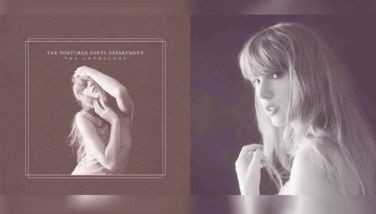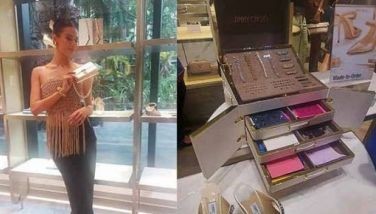Sounds of Malaysia at Muzium Muzik
MANILA, Philippines –When in Kuala Lumpur, make sure to swing by Muzium Muzik (a.k.a. National Music Museum). For tourists with a keen interest in ethnic music or music in general, this is the place to go.
We were told that Muzium Muzik used to be the National History Museum, then recently transformed to its present form to spotlight Malaysia’s multi-cultural and multi-racial musical landscape. The museum is open daily and admission is free.
The museum stands next to other tourist attractions in the Malaysian capital such as the City Gallery, the National Textile Museum, among other structures in a heritage-laden area surrounding the famous Merdeka Square.
These buildings bear “old colonial” influences, like the Mughal architectural style (defined as a mix of Islamic, Persian and Indian influences). The building where Muzium Muzik is housed was itself constructed in 1888 as the Chartered Bank of India, Australia and China.
Muzium Muzik showcases a variety of traditional instruments from Peninsular Malaysia, Sarawak and Sabah. Some of the instruments on display are said to date way back to the 16th century, or the post-Portuguese period, which according to the country’s history, was the time when Malaysia’s “acculturated music” emerged, featuring both local and foreign elements from Arabian, Persian, Indian, Chinese and Western music.
Some of the musical artifacts you can find here are Malay instruments (Gong, Bonang, Serunai, Gambang); Indian instruments (Karthal, Tabla, Baya, Kombu, Harmonium, Manjira); Chinese instruments (Da Luo, Gong Xiao Luo, Pipa, Gu Zheng, Sheng, Yan Qing); Aboriginal instruments (Ginggong, Seruling, Keranting); Sarawak instruments (Engkromong, Sape, Engkerurai, Ketebong); and Sabah instruments (Kulintangan, Gambus Selindang Labu, Zither Buluh, Trompet Siput).
The names may sound totally alien (apart from the Kulintangan which is similar to the kulintang ensemble of Mindanao) but worry not: The museum is carefully curated. Music instruments aren’t just identified, but there are also detailed descriptions including origins, materials used, even instructions on how to make one, and if you want to hear how these instruments sound, there are also listening stations.
There’s also a section dedicated to National Icon Tan Sri Datuk Amar Dr. P. Ramlee. According to World and Its Peoples: Malaysia, Philippines, Singapore, and Brunei, Ramlee, who was a singer, actor, director and songwriter, helped produce distinct Malaysian music that blended folk sounds with Western dance rhythms and Asian music.
Too bad we came on a weekday so we weren’t able to catch any of the live traditional performances held every Sunday, like the Malay Gamelan, a traditional orchestra that plays sweet-sounding melodies using gongs, percussions and stringed instruments.
According to Malaysian Tourism government figures, Malaysia recorded 27,437,315 tourist arrivals in 2014, a 6.7 percent increase from the previous year. In 2014, Filipino tourists ranked seventh among the Top 15 nationalities visiting Malaysia.
- Latest
- Trending

























 Exclusive
Exclusive





